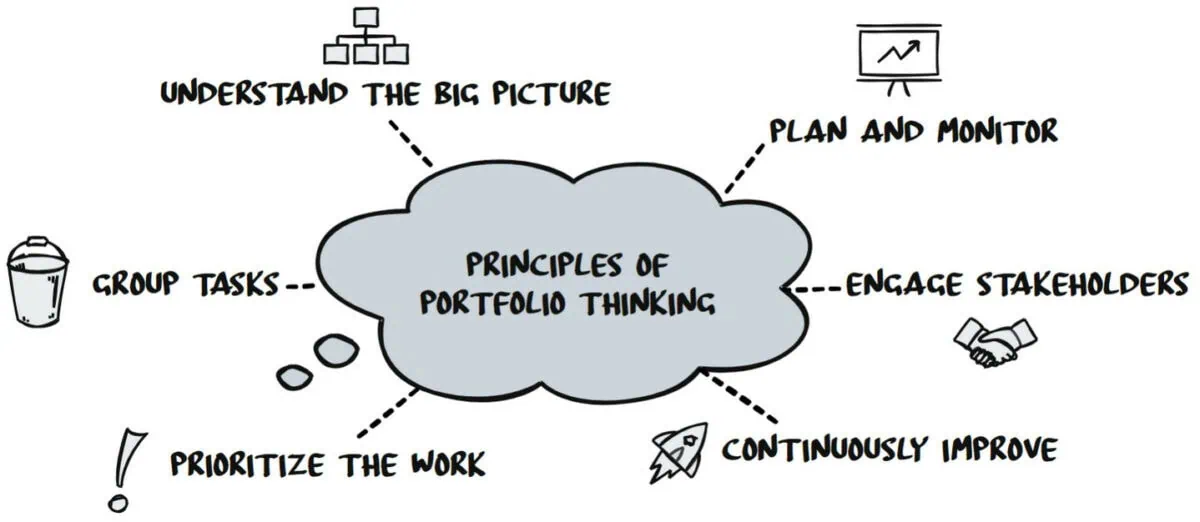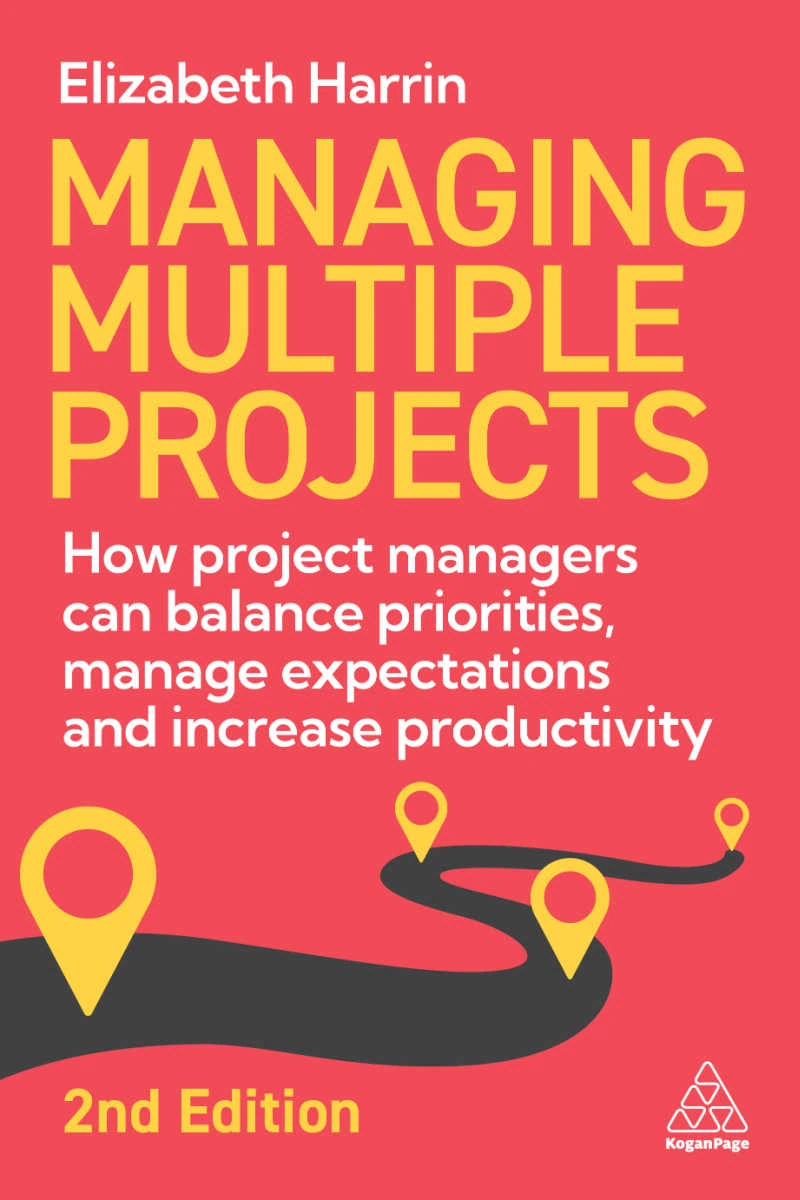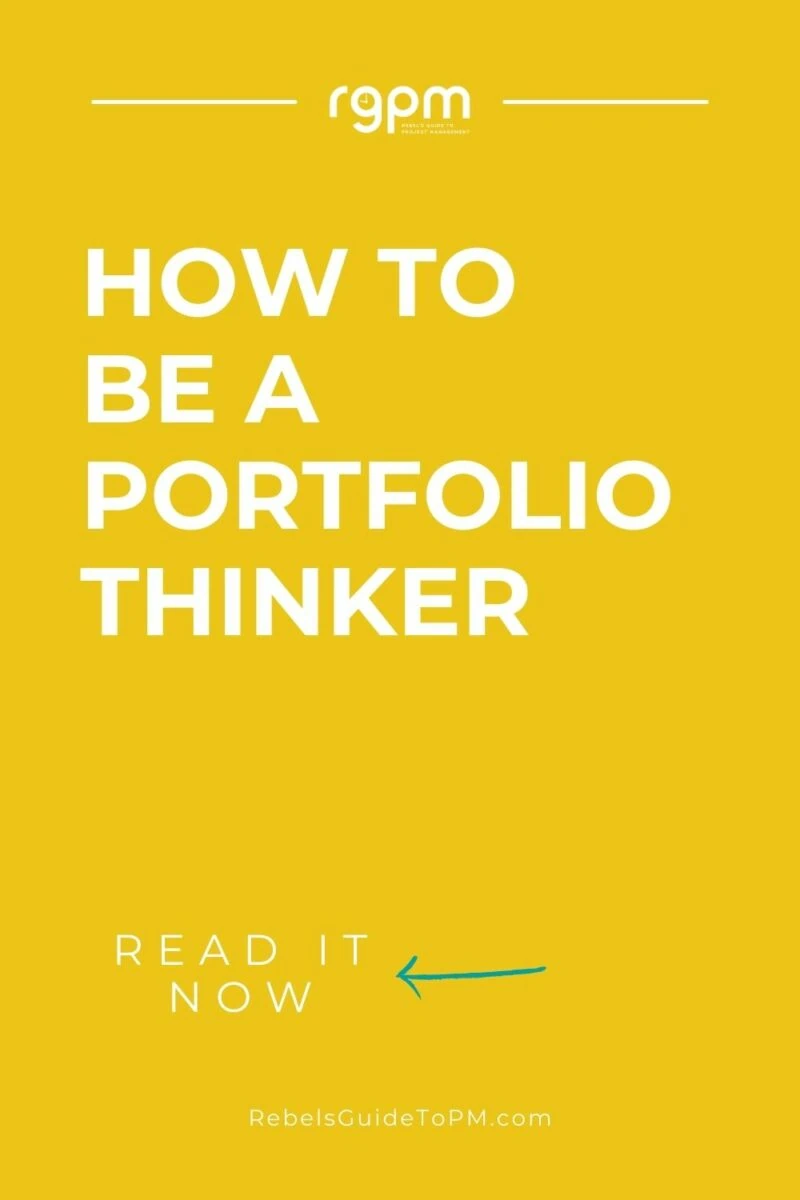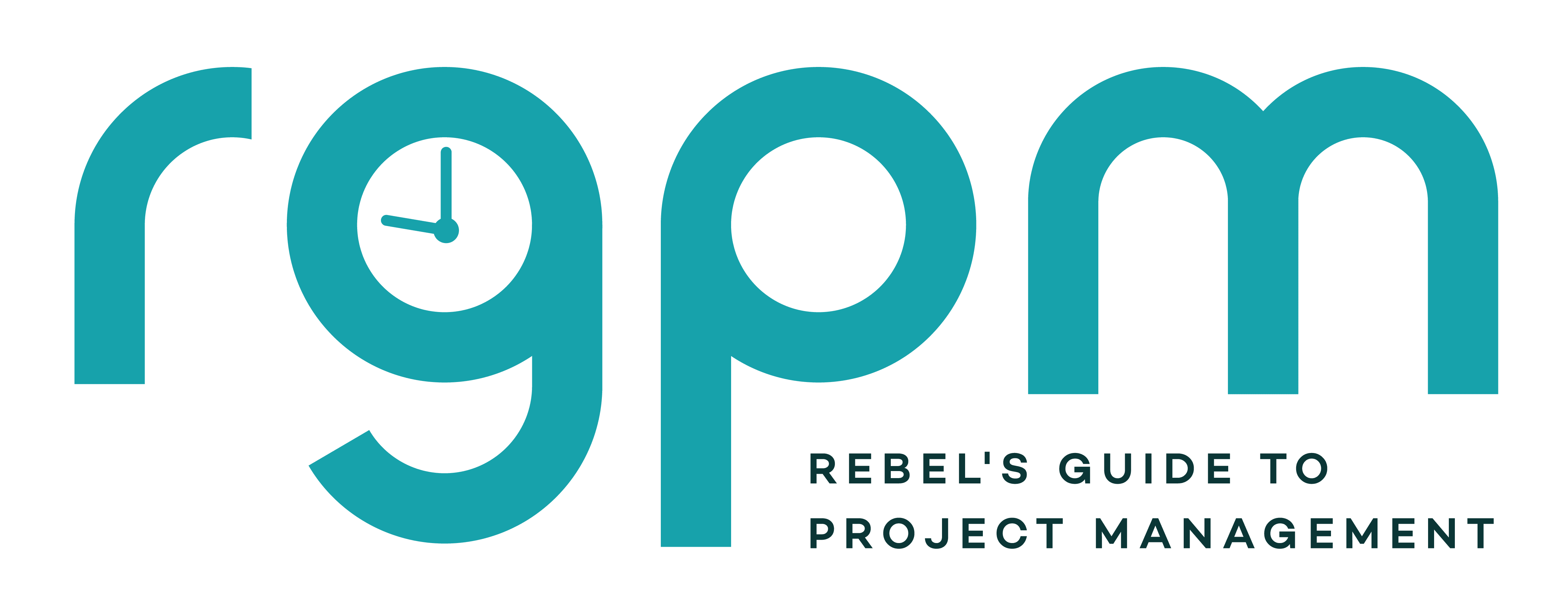How to be a Portfolio Thinker
When you are juggling several projects at once, it pays to be able to take the bigger picture view of your workload. So why does that seem so hard? Once you’re stuck in the detail of To Do lists and Gantt charts it can feel difficult to lift your head and see how everything fits together.
However, the project environment already has a set of tools that allow you to do that at an organizational level: portfolio management.
In this article, we’ll look at portfolio management and then talk about how you can use the same principles to think of your own work as a portfolio to keep it all on track.
What is portfolio management?
Managing a portfolio requires a specific way of thinking: a joined up, holistic way of looking at everything with a view to creating balance, assessing priorities and making choices.
At an organizational level, portfolio thinking is shaped and constrained by what the Praxis Framework defines as the seven components of portfolio management:
- Establishing an infrastructure to support projects and programmes
- Defining management procedures and processes to be used consistently across projects and programmes
- Optimizing the allocation of available resources by managing supply and demand
- Maintaining a portfolio that balances strategic objectives in changing conditions
- Improving the delivery of projects and programmes through a co-ordinated view of risk, resources, dependencies and schedules
- Co-ordinating the need for change with the capacity of the organization to absorb change
- Reducing costs by removing overlapping and poorly performing projects and programmes.
These elements reflect how an organization would want to structure its governance processes to ensure the right projects get done at the right time, with the right resources to deliver the right outcomes and benefits.
If you are building a PMO, you’ll probably use these principles, or similarly-worded ideas, to frame the way you manage your work across the organization.
Individual portfolio management
However, you can use portfolio thinking at an individual level too. By reframing these organizational responsibilities to make them applicable to your personal workload, you can structure your workload to look at it in a portfolio way, which will help you feel more in control.
Many of my students and mentees feel more confident once they can ‘get their hands around the work’ and brain dump all the projects and tasks that are taking up space in their heads.
Portfolio thinking helps you see the connections between projects and activities that may make more sense if they are managed together.
The six principles of portfolio thinking at an individual workload level are as follows:
- Understand the big picture: all the tasks, projects and programmes in the portfolio
- Prioritize the work
- Group tasks and projects into buckets to make them easier to manage, monitor and control
- Plan and carry out all the work, and monitor progress against your plan
- Communicate project status and providing recommendations for actions to your manager, project sponsors and other key stakeholders
- Look for opportunities to continuously improve by learning as you go.

The concept of managing by portfolio thinking is covered in more detail in my book, Managing Multiple Projects.
Get your copy
Managing Multiple Projects: How Project Managers Can Balance Priorities, Manage Expectations and Increase Productivity is a book that offers a comprehensive framework for juggling your workload and still leaving the office on time.

1. Understand the big picture
The first principle requires you to have a full understanding of what makes up your workload today. That big picture view will give you the contents of your personal portfolio and the foundation for creating efficient working practices.
The easiest way to get this view is to make a big list of all the things you are working on.
2. Prioritize the work
The second principle is to prioritize the work. But everything is a priority, right? While you might hear that from colleagues or managers, it can’t be true – and even if it was, it’s unrealistic to expect project managers to work on everything all at the same time.
That’s not how work works. Having said that, if you only worked on the project that is your top priority, you would never make any progress on projects that appear lower down the list.
There is a balancing act in ensuring your priority projects get more of your time but the lower priority projects still get some attention – because no doubt your boss expects those to be moved on at least a little instead of ignored each month.
3. Group tasks and projects into buckets
Next up is grouping the work. If you can group the work into buckets, it becomes less overwhelming and you benefit from efficiencies of managing things together. Look for connections between the things on your portfolio list.
Here are some ways that you can group:
- By stakeholder: Do you have common resources or subject matter experts who are working with you on multiple projects? Perhaps you have multiple projects for the same sponsor, department, customer, or client.
- By theme or content: Do your projects have common deliverables or subject matter? For example, group all the projects that you’re doing that involve construction, or the projects that involve web design.
- By location: Do your projects serve a particular geographic location? Can you split them by country or region?
- By lifecycle stage: Do you have multiple projects going through a common project process in the lifecycle? You could group all your projects that are in the initiation phase, for example, so that you can work on common activities for them all.
- By project management approach: Do you have projects using different approaches? Maybe you’ve got some that are using a waterfall or predictive methodology, and others where you’re working with
agile or Scrum teams in a more iterative way.

4. Plan and carry out the work
The fourth principle of personal portfolio management is planning and carrying out the work, and monitoring progress against that plan, so plans are required.
Go through your portfolio and check that every project has, as a minimum, a high-level timeline. It doesn’t have to be detailed but you will need an idea of the key dates and milestones, as well as an idea of what resources (people and things) you need.
5. Communicate project status
A lot of stakeholder engagement is communication. It’s the fifth principle of personal portfolio management: communicating project status and providing recommendations for actions to your manager, project sponsors and other key stakeholders.
Communication goes wider than simply providing status updates and proposals for action because a lot of modern knowledge work is communication. Think of all the emails and instant messages you get in a day.
Think of all the staff briefings and phone calls. It is not surprising that stakeholders suffer from communication fatigue. There is just so much, it’s hard to pay attention to it all.
Think about how you can streamline project communications by combining messages and meetings.
6. Look for opportunities to improve
Looking for opportunities to continuously improve by learning as you go is the sixth and final personal portfolio management principle. Find time to consider what you have learned and what you are going to differently as a result of that knowledge.
Finding the time to reflect can be difficult when your project workload is heavy, but there are ways to build reflection time into each month. There are probably retrospectives or lessons learned conversations already scheduled: these are a rich source of learning and opportunity.
Have a working lunch with a colleague in a similar role to you and chat about what you’ve done this month that was successful. Share ideas about how to approach the situations that didn’t go quite so well.
If you prefer to reflect alone, put 30 minutes in your calendar for first or last thing in the week, grab your favourite hot drink and work through a Stop, Start, Continue exercise (get a free template for that here).
When you approach your work as a portfolio thinker, you can start to see where activities can be streamlined, just like you would managing the portfolio for the whole organization. Do you think this approach would work for you?
